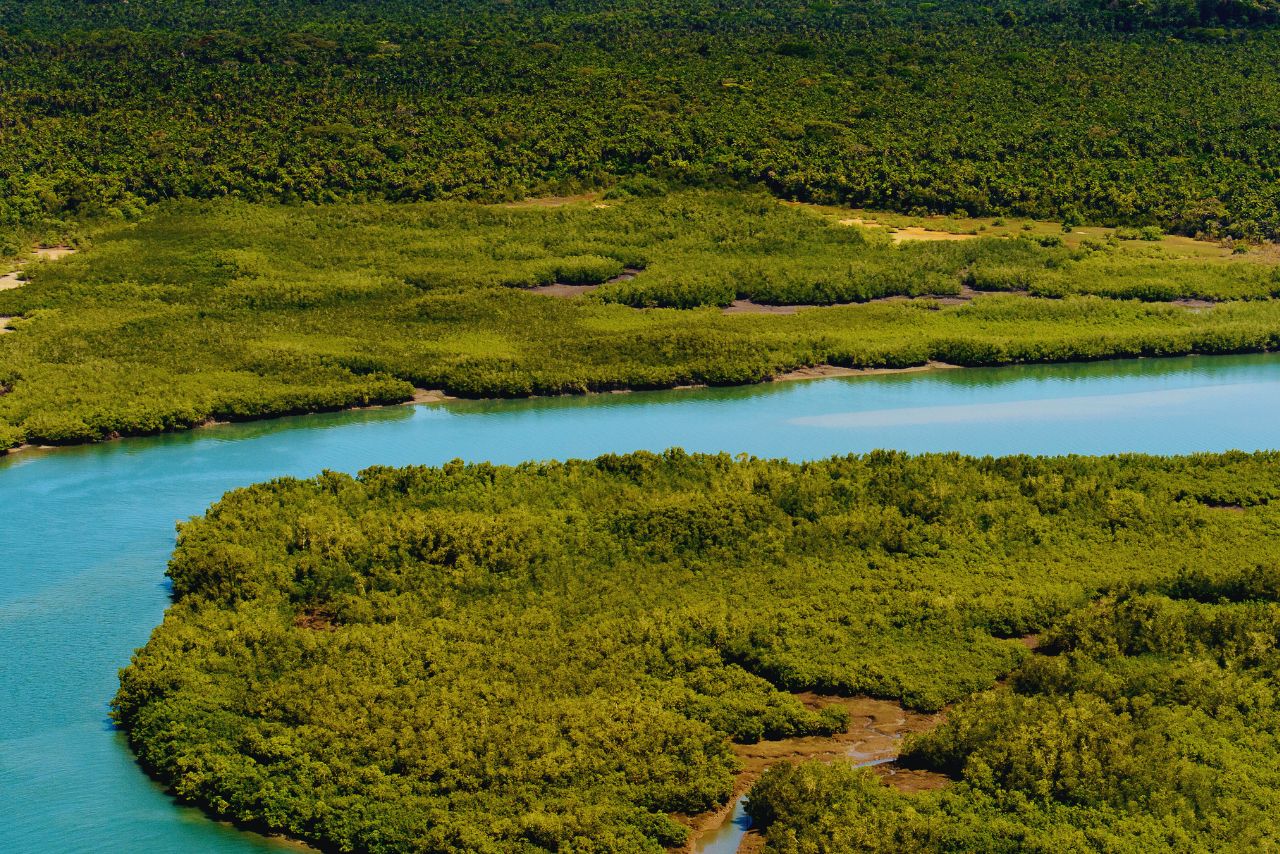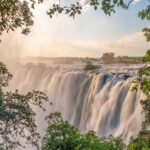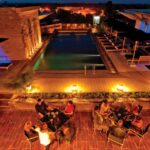West Africa is a region where adventure still feels raw and real.
Beyond the well-known tourist paths, you’ll find breathtaking landscapes: rainforests full of hidden animals, ancient groves protected by myths, waterfalls that roar into clear pools, and golden savannas that seem to go on forever.
Life here has its rhythm. At sunrise, fishermen leave in dugout canoes, markets are busy with music and spices, and communities have traditions that go back hundreds of years.
Many tourists go to busy beaches or well-known landmarks, but West Africa’s real heart beats in its hidden gems, the places that haven’t been changed and are still full of wonder.
These are not just destinations but experiences that linger long after the journey.
Here are 13 top hidden gems across West Africa that will stir your spirit, spark your curiosity, and give you stories worth carrying for a lifetime.
São Tomé and Príncipe: Parque Natural Obô & Lagoa Azul
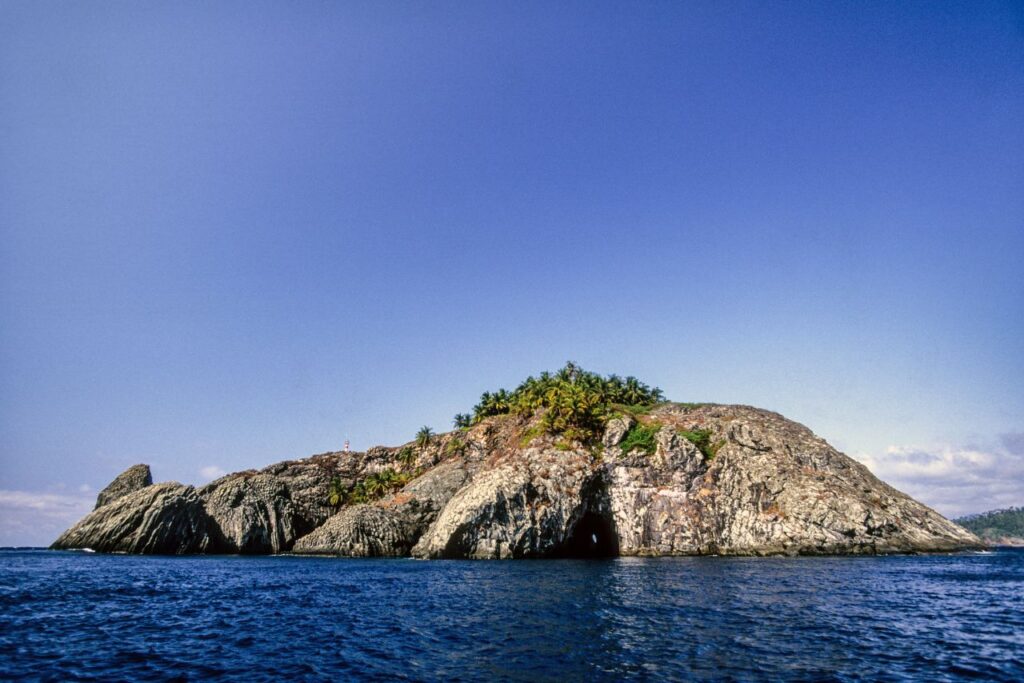
If islands and rainforests call your name, São Tomé and Príncipe is a paradise that most tourists haven’t seen yet.
It has a calm vibe, beautiful beaches, a dense rainforest, and landscapes formed by volcanoes. Hiking, wildlife, local foods, and a sense of being in a unique place are all things that you can enjoy at Parque Natural Obô.
On the island of São Tomé, north of the capital, lies the Lagoa Azul (Blue Lagoon). Its crystal-clear water makes it perfect for swimming and snorkeling, and the surrounding landscape of palm trees and volcanic rock feels like a movie scene.
There’s no entrance fee, and you can bring your own picnic. Local fishermen sometimes offer boat rides for a small tip.
Nearby eco-lodges provide affordable stays, and seafood dishes like grilled fish, octopus stew, or banana bread are a highlight of island cuisine.
For travelers chasing tropical hidden gems in West Africa, São Tomé and Príncipe is the definition of unspoiled beauty.
Tiwai Island, Sierra Leone

Tiwai Island is a green wildlife sanctuary in the Moa River in the southeast of Sierra Leone.
In its more than 1,200 hectares, it is home to 11 species of primates, such as the rare pygmy hippopotamus and the critically endangered Diana monkey.
For wildlife lovers, this is a dream island. At dawn, the forest vibrates with calls of monkeys swinging through the canopy, and at night, fireflies light up the riverside.
Visitors can stay in simple eco-lodges or camp beneath the stars. Meals are hearty: rice with stews, fresh fruit, and local breadfruit.
A guided walk through the rainforest costs just a few dollars, while canoe trips along the Moa River let you see wildlife from another angle.
The Heritage Trail, connecting the eight surrounding communities, allows you to meet locals, learn about traditions, and experience life by the river.
Recently recognized as a UNESCO World Heritage Site (2025), Tiwai Island remains blissfully wild, a must-see for those seeking off-the-beaten-path experiences in Sierra Leone.
Île de N’Gor, Senegal
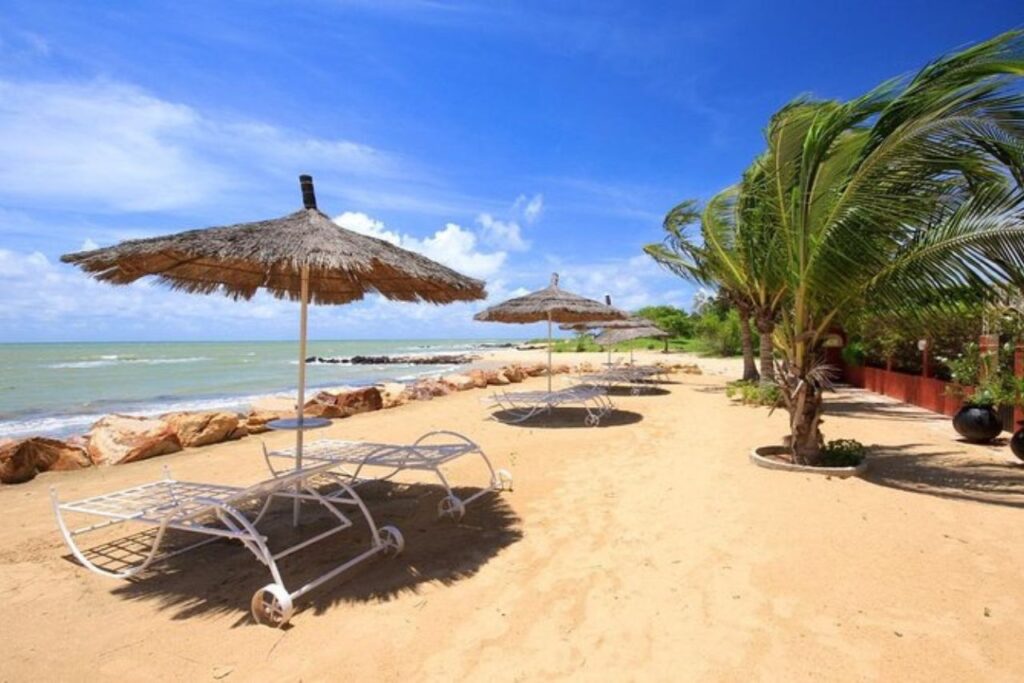
Image gotten from viator.com
Just off the coast of Dakar, Île de N’Gor is a pocket-sized island with oversized charm. It is one of West Africa’s hidden gems.
The island’s car-free lanes, sandy beaches, and bright guesthouses are all just a five-minute pirogue ride away.
Many surfers come to this island because it has some of the best Atlantic waves in West Africa. Others just come to relax. The days go by quickly when you swim, take naps under palm trees, and eat seafood straight from the ocean.
Budget stays start at about $20, and boutique guesthouses have cozy rooms with views of the sea. Grilled fish, prawns, and octopus on a platter almost never cost more than $10.
Along the shore, artists sell paintings, woven goods, and jewelry they’ve made themselves. This gives the island a creative pulse.
While Dakar is always busy, N’Gor’s rhythm is slow and steady, shaped by the tides and trade winds.
N’Gor is a great place to get away for both adventurers and dreamers. You can paddle a canoe, watch surfers ride the waves, or sip bissap juice as the sun goes down over the water.
Mole National Park, Ghana
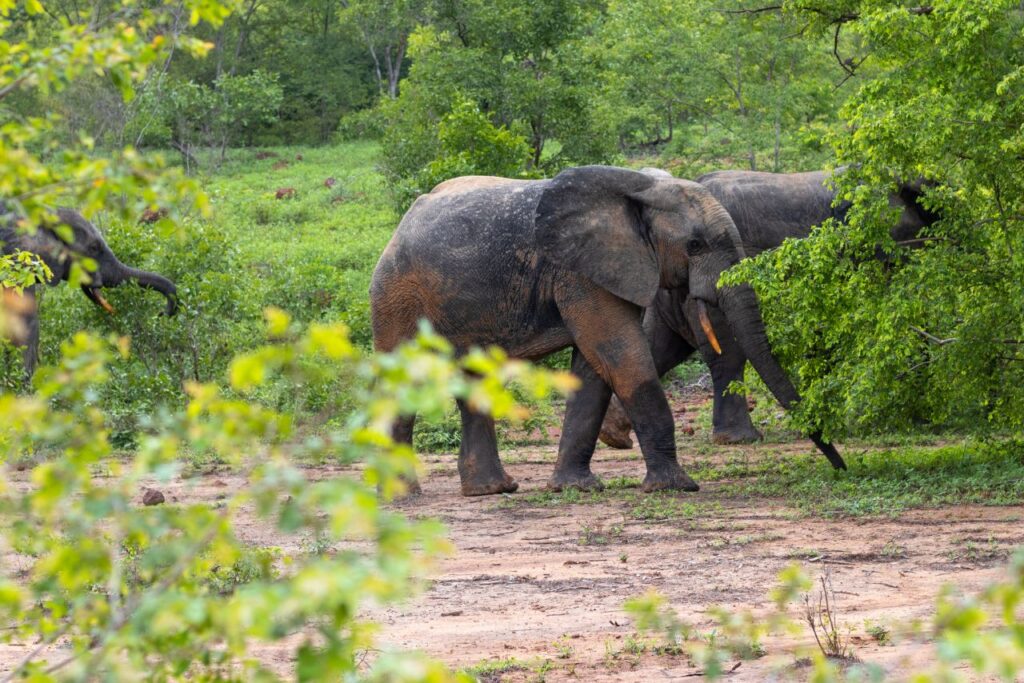
Mole National Park is the largest wildlife reserve in Ghana.
If you want to see elephants roaming freely and experience the true charm of the wildlife safari in West Africa, this is your stop.
Mole is unique not only because of its size but also because it’s easy to get to; you don’t need a lot of money to go on safari-style adventures here.
Imagine walking through the bush at dawn and all of a sudden seeing a family of elephants grazing just a few meters away. Your heart would be racing with excitement.
For foreigners, the entry fee is about $13, and guided walks or drives on safari cost an extra $10 to $15.
The Mole Motel is on a cliff and has simple rooms with a pool that looks out over a watering hole where animals gather. You can fill up on jollof rice or spicy stews from the area after a long game drive.
Mole makes the dream of African safari come true for all travelers by being affordable, easy to get to, and unforgettable.
Pont Faidherbe, Senegal
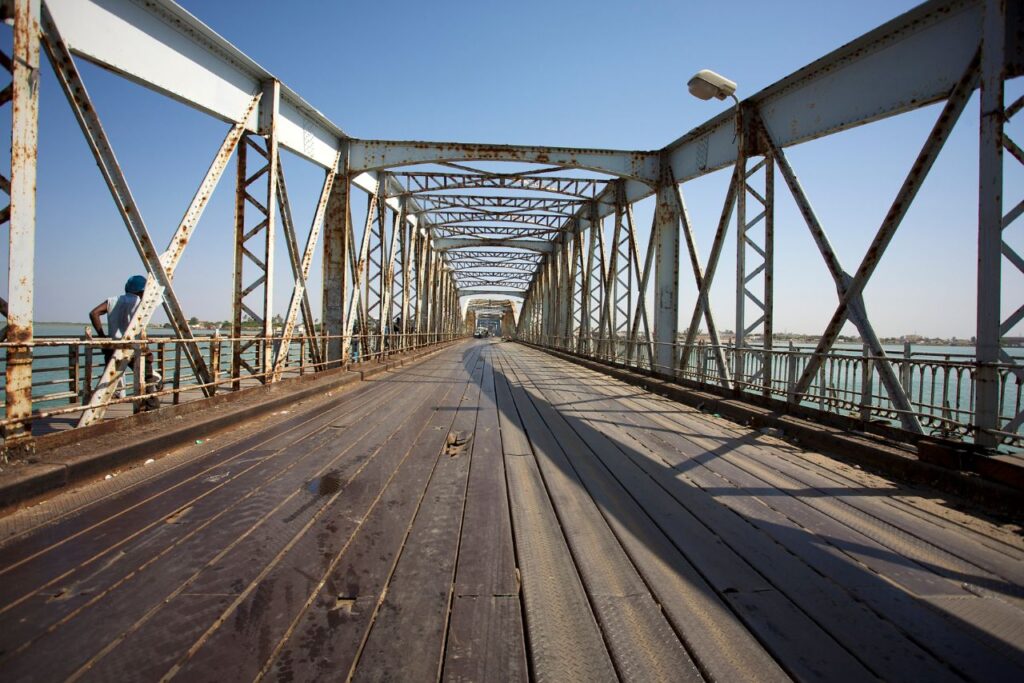
The Pont Faidherbe is more than just a bridge; it’s a piece of history that spans the Senegal River in Saint-Louis. It is a 507-meter ironwork marvel that connects the mainland to the island city. It was built in 1897.
Saint-Louis was once the capital of French West Africa. It has many colonial buildings, jazz music, and busy streets. Walking across the bridge costs nothing, but the experience is priceless.
Fishermen come back with their boats full of the day’s catch as the sun goes down. Pelicans fly low over the river, and the sky turns gold.
At night, fish grilled on the grill and served with cassava couscous costs only a few dollars at cafes by the water.
The Pont Faidherbe shows that history can be beautiful and interesting at the same time.
Tacugama Chimpanzee Sanctuary, Sierra Leone
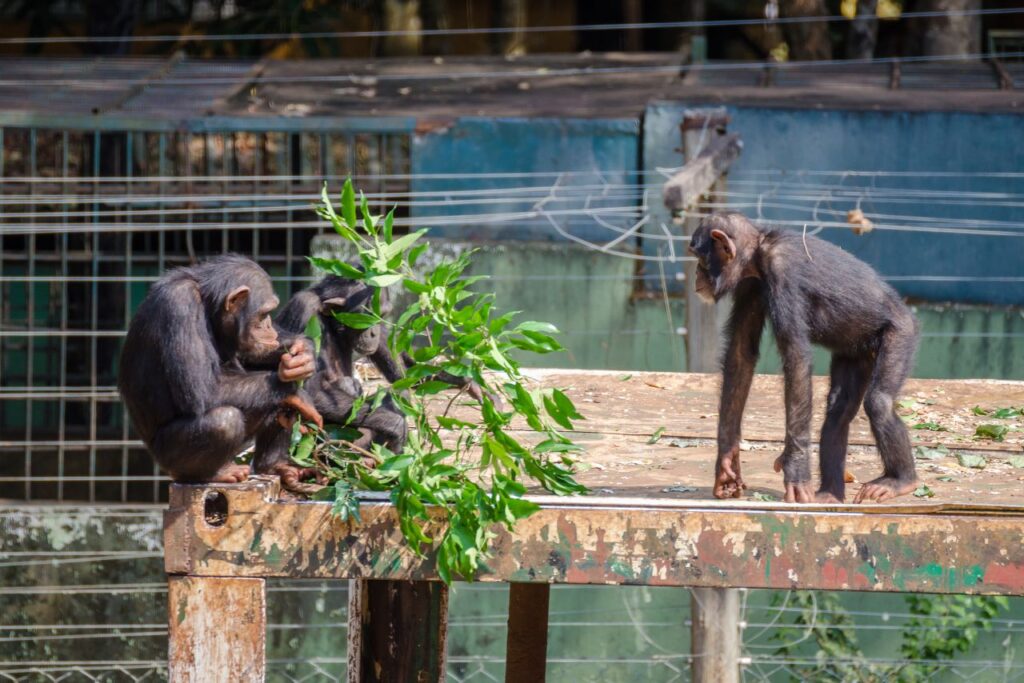
The Tacugama Chimpanzee Sanctuary is just outside of Freetown. It is tucked away in a thick forest and rolling hills.
It has been a safe place for rescued chimpanzees who have lost their families because of hunting or habitat loss since it opened in 1995.
Today, more than 100 chimps live here in semi-wild enclosures that are cared for. People are welcome to take tours, watch feeding sessions, and learn about protecting wildlife.
Besides the chimps, Tacugama is also a place to relax. Eco-lodges made of stone and wood let you spend the night and wake up to the sounds of the forest, only a short drive from the capital.
The food here is fresh from the farm, and there are guided nature walks in the hills nearby where you can see lots of different birds.
Foreigners pay about $15 to $20 to enter, and those fees directly support the sanctuary.
If you want to see wildlife, stay in comfort, and have a meaningful trip, you can’t miss Tacugama.
READ ALSO: Where to go in Africa in 2026
Bijagós Archipelago, Guinea-Bissau
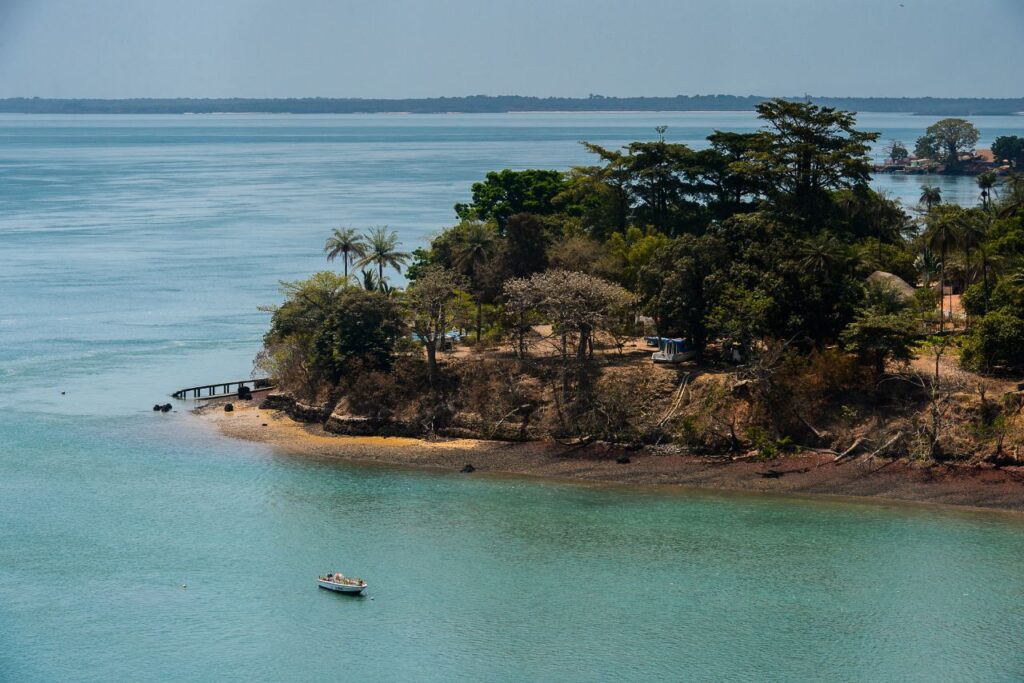
The Bijagós Archipelago is a chain of 88 islands scattered like emeralds across the Atlantic. About 20 are permanently inhabited, but most are very far away and wild.
Orango National Park is one of the gems. It has lagoons, mangroves, beautiful beaches, and the rare chance to see saltwater hippos.
Staying here feels like time travel.
Guesthouses on Bubaque Island cost between €20 and €30 a night, and you can eat seafood that comes straight from the sea.
A full day of boat rides to nearby islands costs about €40 to €50. The Bijagós people have strong traditions, and women are very important in their communities.
You’ll see masked dances and hear drumming that will make you feel close to nature if you go during a festival.
This group of islands is like a paradise for culture and nature lovers alike.
Osun Sacred Grove, Nigeria

The Osun Sacred Grove is a lush forest that runs along the Osun River in the city of Osogbo. It is a UNESCO World Heritage Site and one of the last sacred groves in Yoruba culture.
There are sculptures and shrines to the goddess Osun all over the place, hidden by tall trees that give it an otherworldly feel.
Entry costs are modest (about ₦1,000–2,000 for Nigerians, a bit more for foreigners). Thousands of people come to the Osun-Osogbo Festival every August to honor the goddess with music, dance, and colorful processions.
Going for a walk in the grove feels spiritual even when there isn’t a festival going on. It’s like entering a living story where nature and spirituality are mixed together.
Abuko Nature Reserve, The Gambia
The Abuko Nature Reserve is The Gambia’s oldest protected area. It’s only 25 minutes from Banjul.
Even though it’s small, it has a lush forest, crocodile pools, more than 270 species of birds, and groups of green vervet monkeys.
It costs less than $5 to get in, and guided tours are also cheap.
Hides that are higher up let you watch wildlife without being heard. Women from the area sell fruit at the gate, and there are places set aside for picnics.
The reserve is a favorite for birdwatchers, but it’s equally rewarding for casual travelers seeking a dose of nature just outside the city.
Pendjari National Park, Benin

Pendjari National Park is found far to the northwest of Benin. It is a huge savannah that is full of animals.
It’s one of the last places where West African lions, elephants, hippos, and many types of antelope can still live. The reserve is now safer and better organized for visitors since it is run by African Parks.
Entry costs about €15 per person, and safaris can be arranged with 4WDs and local guides. There are both rustic lodges and camping sites for people who like to try new things.
The nights here are magical, with clear skies full of stars and the sound of hyenas in the distance.
Pendjari may not be as famous as Serengeti, but its raw, untouched feel is exactly what makes it special.
Tamberma Valley, Togo

In northern Togo lies the Tamberma Valley, home to the Batammariba people and their iconic mud tower houses, known locally as “Tatas.”
Some of these earthen fortresses are hundreds of years old and are more than just homes. They are living expressions of architecture, spirituality, and identity.
The valley, which is a UNESCO World Heritage Site, feels like an outdoor museum where old traditions are still alive and well.
Travelers can walk through the villages and meet families who still live the way their ancestors did.
They can also go inside the unique two-story homes that are made of earth. Each tata is both useful and symbolic, made for protection and to keep in tune with nature.
The valley itself is framed by rolling hills, baobab trees, and fields of millet, creating a setting that feels timeless. Visiting here is about more than admiring architecture; it’s about learning how deeply land, culture, and spirituality intertwine.
For anyone curious about heritage that has endured for centuries, Tamberma Valley is a journey straight into the heart of West Africa’s soul.
READ ALSO: 8 Best Cities for Solo Female Travel in Africa
Sindou Peaks, Burkina Faso

The Sindou Peaks are a dramatic group of sandstone formations in the southwestern part of Burkina Faso.
They are shaped like needles, towers, and ridges. They look like something from another planet, yet they are sacred to the local Sénoufo people.
It only costs a few thousand CFA francs to visit, and local guides tell stories and lead hikes through the formations.
The best time to visit is at sunset, when the rocks glow orange and purple against the fading sky. Nearby simple guesthouses charge $10–15 a night and serve tô (a millet dish) with sauces from the area.
Sindou is not well known, but its beauty will stay with you forever.
Gooya (Gôoya) Valley, Nigeria
The Gooya Valley is one of Nigeria’s most beautiful and little-known natural sights. It is hidden in Yobe State in the northeast.
It has rough cliffs, winding gorges, and lush, unspoiled vegetation that make the scenery feel both dramatic and deeply peaceful.
Hikers and people who love nature can explore the valley for hours on end. The trails lead to beautiful views, hidden caves, and patches of lush vegetation that appear out of nowhere.
What makes Gooya special is its raw, unspoiled beauty. There aren’t many tourists here yet, so the experience feels private and unspoiled.
In the early morning, a soft mist often clings to the ridges, making for picture-perfect scenes as the sun comes up.
People who come here can also get to know people from nearby communities, try traditional foods, and learn about the history and culture of Yobe.
Gooya Valley is Nigeria’s hidden gem for daring travelers looking for something out of the way.
Final Thoughts
West Africa doesn’t reveal itself all at once; it unfolds slowly, rewarding those with curiosity, patience, and a sense of adventure.
These destinations invite you to pause, connect, and truly experience the heart of the region. They’re not just attractions; they’re hidden gems in West Africa that transform travel into something deeper than sightseeing.
Perhaps this is your sign to stop waiting for the “perfect time.” Save what you can, book that ticket, and step into a journey you’ll never forget.
Walk through ancient forests, share laughter with children in riverside villages, taste smoky grilled fish along the coast, and let the rhythm of drums and waves reset your heartbeat.
The best places to visit in West Africa are not polished or crowded; they are real, raw, and unforgettable. Once you go, you’ll carry the spirit of West Africa with you forever.

